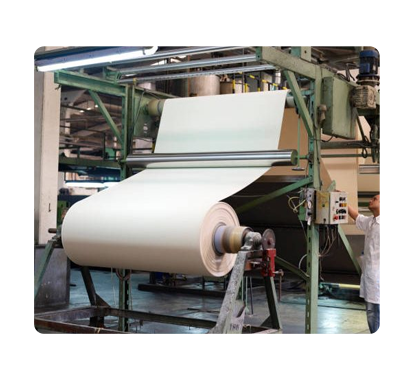The project is a factory for the production of photocopying and printing paper used in books, magazines, pictures, printing, copying and designs. The project products are: photocopying and printing papers. The sectors targeted by the photocopying and printing paper factory are: (printing presses, printing and publishing companies – magazines and newspapers – stationery stores – ministries and government agencies – universities – the private sector), in order to benefit from the increased demand for these products. The feasibility study of the photocopying and printing paper factory project shows that it is one of the projects with appropriate costs and high economic returns compared to other projects.

Mashroo3k Company for Feasibility Studies and Business Plans is working on studying the feasibility of a photocopy and printing paper factory project from the financial, marketing and technical aspects. The company analyzes and studies the project idea, its components, nature, size and the markets it targets. It also analyzes the market size, competitors and the marketing gap between supply and demand. After analyzing the market size, it becomes clear that there is an increasing demand and a great need for the products provided by the project, which are: (photocopy and printing papers). <The printing and copying paper factory aims to achieve self-sufficiency in paper products, employ workers, improve their economic and social level, achieve a high quality level for paper products, maintain a competitive price level that enables the project to obtain its target share, and contribute to covering part of the increasing demand for paper products and using the latest methods in the field of paper products manufacturing, which is characterized by its light weight, strong ink absorption, the possibility of recycling, and a high degree of purity. The factory provides products according to international standards by relying on administrative and technical cadres for all targeted sectors, which are represented in; (printing presses, printing and publishing companies – magazines and newspapers – stationery stores – ministries and government agencies – universities – the private sector), and the project seeks to benefit from the increased demand for products in these sectors, and seeks to acquire the highest possible percentage of the marketing gap between supply and demand.




The Kingdom of Saudi Arabia has paved the way for development with its ambitious Vision 2030, which aims at economic diversification, the renaissance of non-oil sectors and increasing the contribution of the private sector to GDP, and this can only be achieved through the renaissance of industry and mining as two main tributaries in major economies, and the Kingdom is determined to increase their participation in its GDP by about 15%. When talking about industry in the Kingdom, it should be noted that it was not born out of the moment, but rather it has been extended and rooted since the discovery of oil in the Kingdom in the late thirties of the last century. Over the decades, the Kingdom spared no effort to develop its industry; it established the Industrial Development Fund (1974), the Royal Commission for Jubail and Yanbu (1975), and SABIC in 1976. The roles and tasks undertaken by these institutions and the programs they worked on to grow the industrial sector and develop its performance and working mechanisms are no secret to anyone. As a result of the efforts exerted years ago in this direction, the number of factories in the Kingdom today has increased to more than 10,000 factories. We, mashroo3k, believe in the importance of the industrial sector and its role in driving the economy, so we will present its most important indicators below so that anyone wishing to invest in it can be aware of them:
